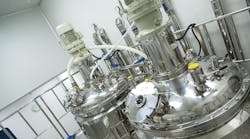The U.S. Environmental Protection Agency has made public the identities of more than 150 chemicals contained in 104 health and safety studies that had been previously claimed confidential by industry. The aim of the announcement is to provide the public with greater access to information on the chemicals that are manufactured and used in the United States.
The chemicals involved are used in dispersant formulations and consumer products such as air fresheners, non-stick and stain resistant materials, fire resistant materials, nonylphenol compounds, perfluorinated compounds, and lead.
In 2010, the EPA formally requested that industry voluntarily declassify unwarranted claims of confidential business information (CBI). The agency also issued new guidance outlining plans to deny confidentiality claims for chemical identity in health and safety studies under the Toxic Substances Control Act (TSCA). Based on this guidance, the EPA notified a number of companies in February 2011 that the agency had determined that their CBI claim was not eligible for confidential treatment under TSCA and that it intended to make the information public.
The health and safety studies include some declassified by the agency and other voluntary declassifications by companies in response to the EPA’s challenge. According to the EPA, it is committed to posting new declassified materials under TSCA on the agency website on a regular basis.
In addition to these actions, the EPA is providing free access to the consolidated TSCA Inventory on the epa.gov and data.gov websites. The EPA also launched a new chemical data access tool that is designed to enable the public to electronically search the EPA’s database of more than 10,000 health and safety documents on a range of chemicals.

